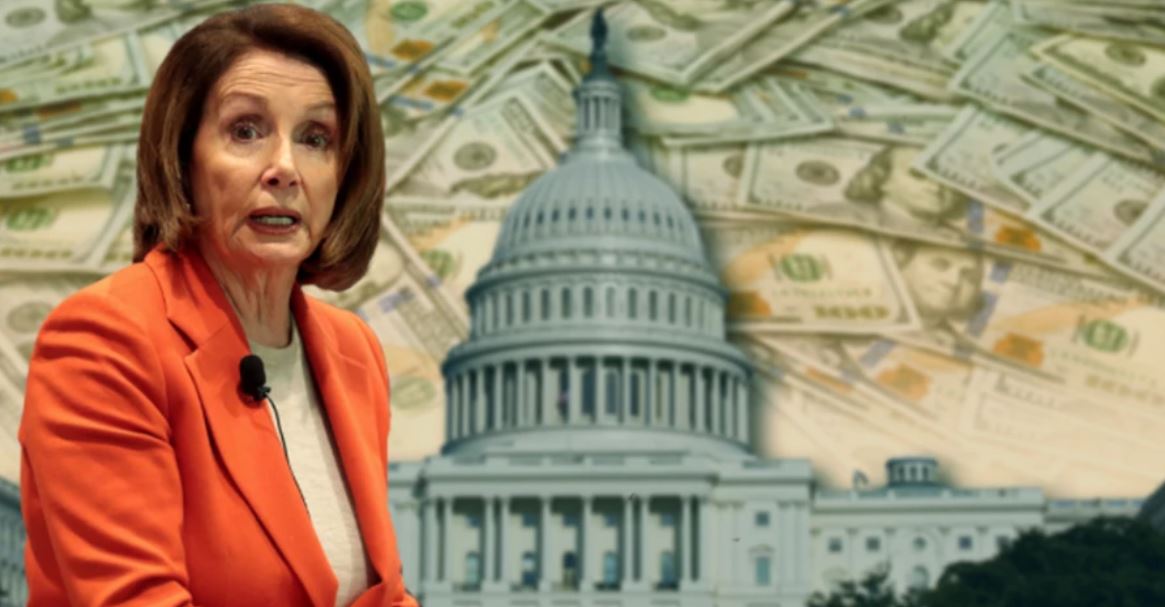 By Brad Polumbo
By Brad Polumbo
It’s another day that ends in y, so, Congress just nonchalantly voted to spend trillions of taxpayer dollars. On Tuesday, the House approved a $3.5 trillion spending resolution on a party-line vote, with Democrats backing the measure and Republicans uniformly opposing it.
“House Democrats passed a $3.5 trillion budget resolution on Tuesday, 220-212, advancing the party’s effort to pass a sweeping economic package that would expand the nation’s social safety net,” Axios reports. “Democrats now will be able to use the budget reconciliation process to pass a bill — likely later this fall — by a simple majority, tackling key priorities like health care, child care and climate change.”
BREAKING: House Democrats pass $3.5 trillion budget resolution https://t.co/OHHEjkTDGR
— Axios (@axios) August 24, 2021
The so-called “Human Infrastructure” plan paves the way for further bills allocating these trillions toward enormous expansions of the welfare state across many different areas and industries. It includes education measures like taxpayer funding for “free” community college and “universal” pre-school, as well as healthcare expenditures like expanding Obamacare subsidies—even for the wealthy—and adding more people to government healthcare programs. It also has climate schemes like huge electric vehicle subsidies, the creation of a “Civilian Climate Corps” to supposedly create “green jobs,” and much, much more.
It would honestly be easier to list what’s not in the proposal than what is.
The expense here is truly mind-boggling. Remember that this spending plan comes on the heels of more than $6 trillion in ostensibly-pandemic-related welfare spending and in addition to a $1+ trillion transportation infrastructure bill. And this is all in light of a $28.6 trillion—and counting—national debt. This additional $3.5 trillion bill amounts to, roughly estimated, about $24,400 in new spending per federal taxpayer.
If enacted, this plan would be one of the biggest expansions of government and the welfare state in American history. To put it into context, consider President Franklin Delano Roosevelt’s New Deal, the legendary set of government programs enacted in the 1930s that created Social Security and many other forms of welfare still with us today.
Easiest way to get your first bitcoin (Ad)
Well, the New Deal cost $41.7 billion at the time. And, roughly translated, that’s about $875 billion in today’s dollars. So, the welfare spending plan House Democrats just approved is several times bigger in total cost than the inflation-adjusted New Deal!
The crazy thing is that the $3.5 trillion price may actually be an underestimate.
One of the major provisions in the spending plan is further extending the recently-expanded “child tax credit,” an expensive welfare program which sends regular checks with taxpayer money to families based on how many kids they have.
The $3.5 trillion resolution, when eventually fleshed out into full spending legislation, is likely to reauthorize the tax credit for 2 to 4 years. However, the White House and leaders in Congress have openly said they want to make it permanent. So, we can expect them to simply re-extend it in a few years. They are most likely only doing a shorter extension in this bill to keep the sticker price of the legislation down.
According to American Enterprise Institute senior fellow and Rowe scholar Matt Weidinger, this means the spending plan could ultimately cost up to $1 trillion more than currently advertised. That’s right: the already-exorbitant $3.5 trillion price tag could really be more like $4 trillion or $4.5 trillion in practice.
“If they only extend something for two years but want to make it permanent, all that means is that in two years, someone else is going to have to figure out how to pay for the extension,” Weidinger told me in a phone interview. “But it’s no less of an expectation that they want to make it permanent… they can just only squeeze so much sugar into this 5-pound sack that they’ve created for themselves today.”
Yet, given the sad normalization of profligate spending in Washington DC, some people might unfortunately be unfazed by the prospect of trillions more going out the door. But we should still be alarmed.
“Money doesn’t grow on trees, and somebody has to pay for this,” Weidinger argued. “Whatever the spending promises are today, they will be matched by some tax hikes—including in this legislation—but not nearly enough to actually cover the true cost of this. So, if you want bigger government, more disincentives for people to be working and supporting themselves, and if you want to leave bigger bills for our children and grandchildren to pay, you’re going to love this plan. [If not], you should be quite skeptical of this plan.”
Of course, the headlines and Americans’ attention are understandably concentrated elsewhere, as chaos grips Afghanistan and the pandemic persists. But we cannot afford to lose sight of the fact that Congress is all the while voting away trillions from our pockets and expanding the scope of the welfare state to unprecedented new heights.
Like this story? Click here to sign up for the FEE Daily and get free-market news and analysis like this from Policy Correspondent Brad Polumbo in your inbox every weekday.
Source: FEE.org
Brad Polumbo (@Brad_Polumbo) is a libertarian-conservative journalist and Policy Correspondent at the Foundation for Economic Education.
Become a Patron!
Or support us at SubscribeStar
Donate cryptocurrency HERE
Subscribe to Activist Post for truth, peace, and freedom news. Follow us on Telegram, SoMee, HIVE, Flote, Minds, MeWe, Twitter, Gab, Ruqqus , GETTR and What Really Happened.
Provide, Protect and Profit from what’s coming! Get a free issue of Counter Markets today.
One of the Biggest Welfare State Expansions in US History Just Got Approved By Congress